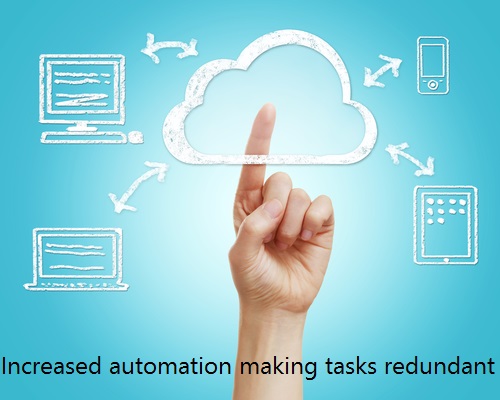
The McKinsey consultants Michael Chui, James Manyika, and Mehdi Miremadi have argued that robotics and artificial intelligence are omnipresent. For example, if you take a plane from an airport, the commercial pilot flies an average of seven minutes. The rest of the time the aircraft is managed by the autopilot.
Will robotics lead to an increase in productivity? Are employees being freed from tedious tasks? Are jobs lost? To find an answer to these questions, McKinsey launched a study on the impact of car mats ring for jobs, organisations and the future of work.
Preliminary conclusions
The focus on occupations is misleading. There are very few professions that are fully automated in the short to medium term. Instead, there are a few activities automated. This has implications for processes within organisations and calls for a redefining of certain functions.
The research shows that 45 percent of the activities for which employees are paid can be automated in the current state of technology. However, it is not just low-skilled work. For example, cases of advanced partial automation are found in professions such as financial planners, doctors and managers.
Redesigning functions and processes
Of course, this has profound implications for leaders and organisational structure. They need to redesign processes and functions, so that advantage can be taken from the benefits of automation. And the benefits go far beyond saving labour costs. The researchers designed a model to identify the scale of the potential benefits. Production increases and the quality and reliability of services and products improves. The return on investment is three to ten times higher. This means that the effective implementation of these changes provides a massive competitive advantage.
No job destruction, but greater alignment
There are four major findings which back customising jobs rather than the destruction of jobs.
Automation of activities: The consultants looked at whether tasks of employees can be automated. In the current state of technology, 45 percent of the tasks are automated. As machines learn to better understand is another 13 percent of them.
Redesign of functions and processes: Only 5 percent of positions can be completely automated. Approximately 60 percent of jobs can see 30 percent or more of their tasks automated. Therefore, many functions will need to change their specifications. Someone who assesses mortgage applications will no longer need to spend more time evaluating all kinds of standard paperwork, and can instead spend more time on exceptional cases and advice.
Impact on knowledge work: As mentioned above, it's not only the jobs of low-skilled workers that are seeing automation. A significant part of the tasks of higher education also qualify for it. Thus, an estimated 20 percent of the duties of a CEO, such as analysing reports and preparing assignments for employees, can be automated. Work for managers and HR professionals, will also see their own tasks and functions change. The work of ward sisters, landscapers and maintenance personnel can be automated, but just barely.
The future of creativity: Skills such as creativity and perceiving emotions are initially the bastion of humans. However, the amount of time devoted to this is surprisingly low. Only 4 percent of the work requires creativity at a median level. For perceiving emotions that percentage is higher at 29 percent.
The consultants advocate to see machines as an opportunity to create new positions, rather than destroy existing ones. People do not like boring work and instead would rather concentrate on tasks that require creativity and empathy. The results of this study emphasises the need to look at activities rather than jobs or occupations. Action should take place by employers and governments in order to fully realise this.
